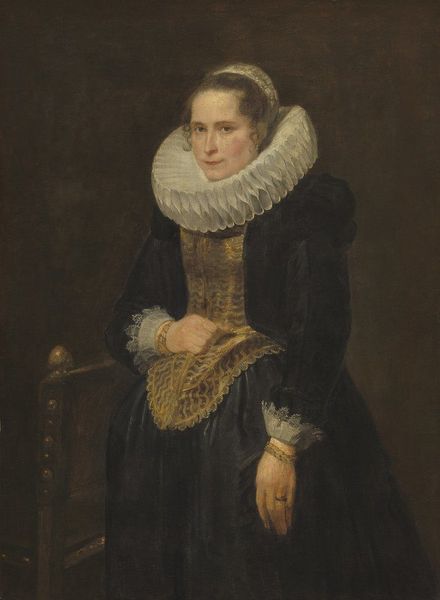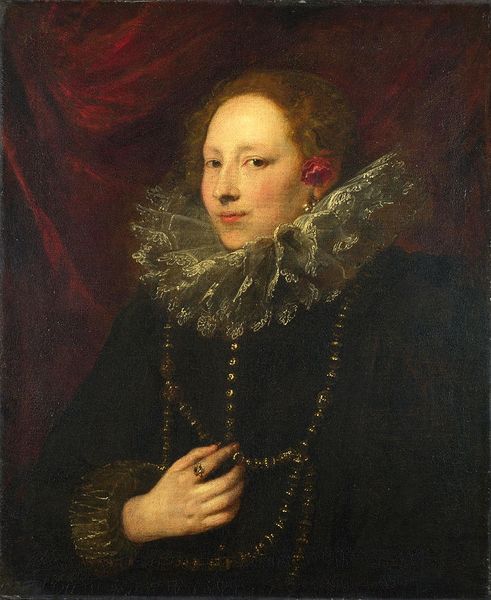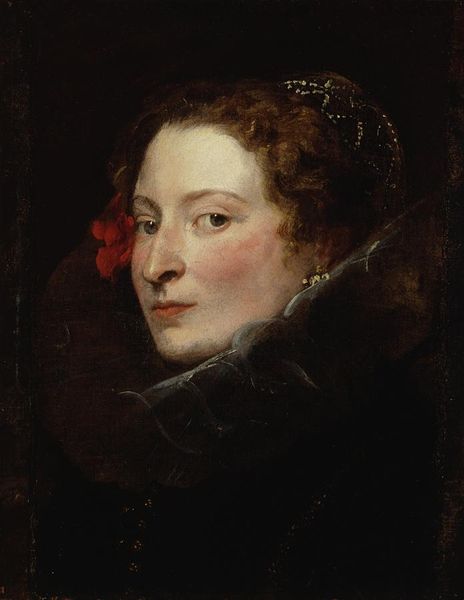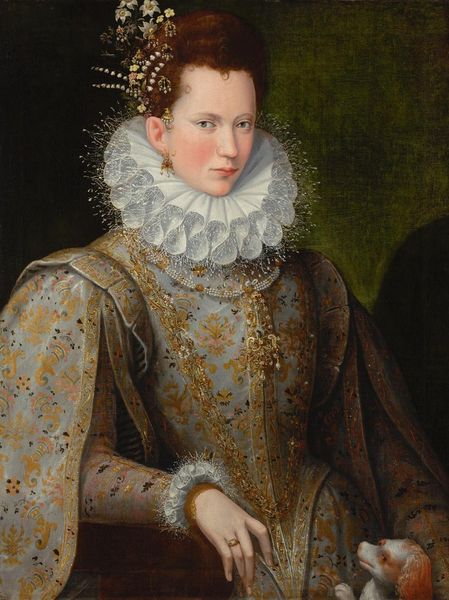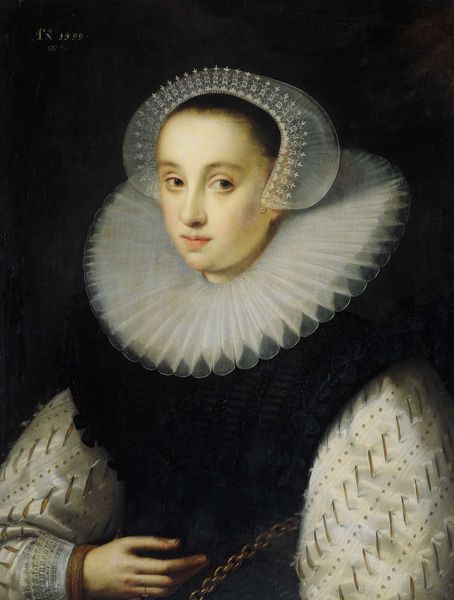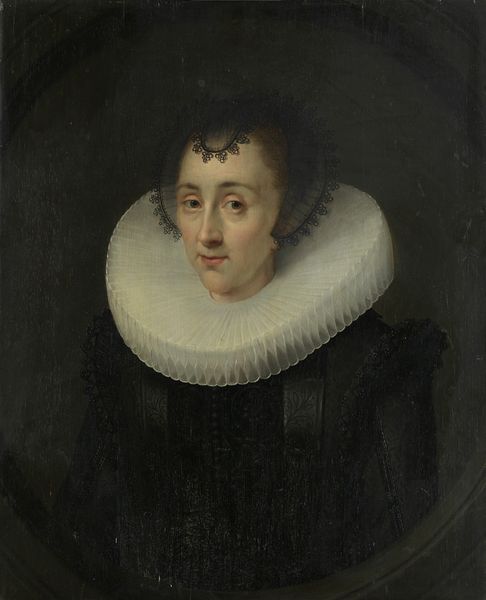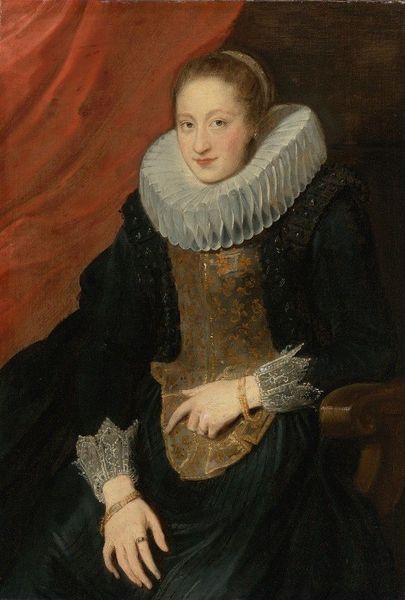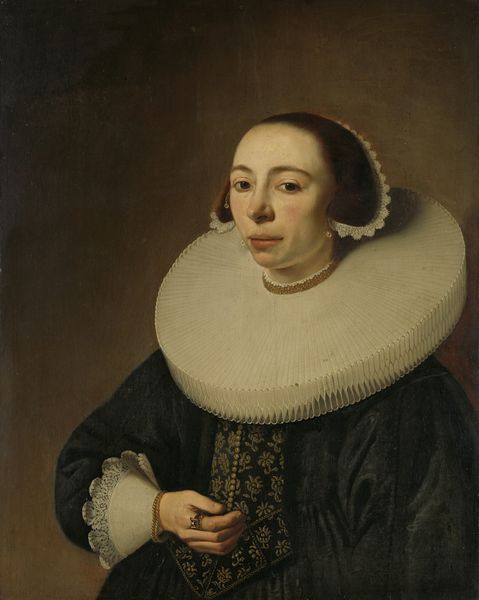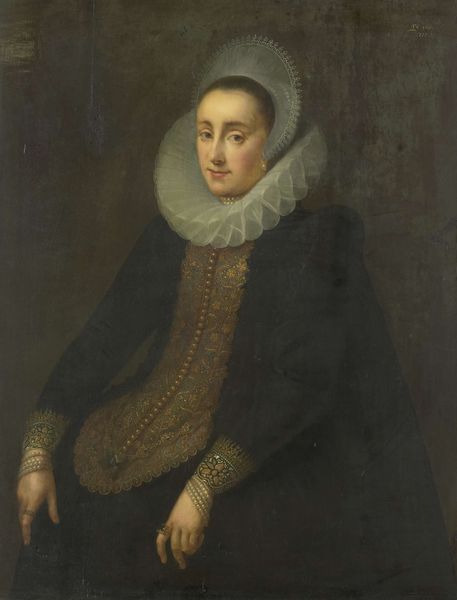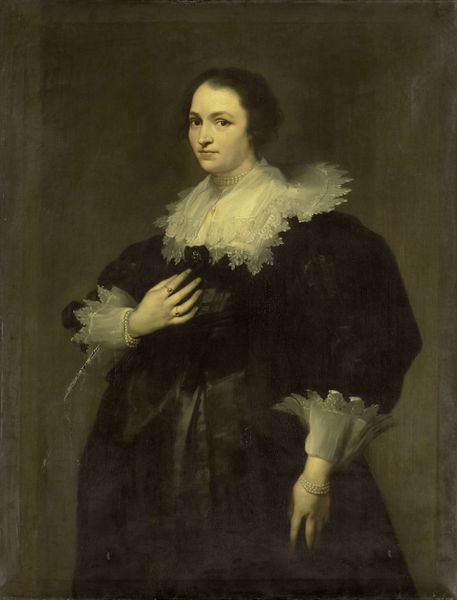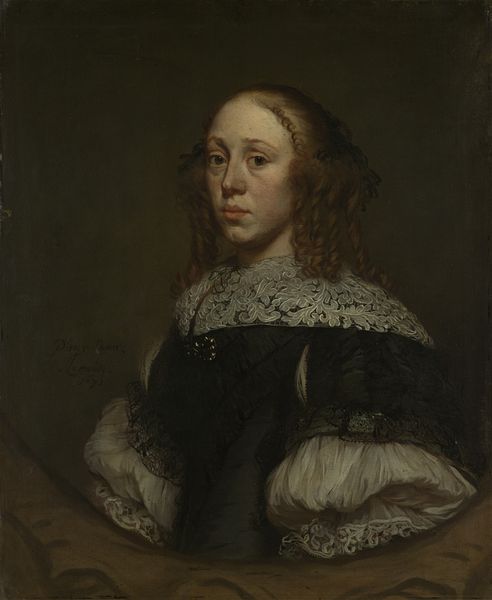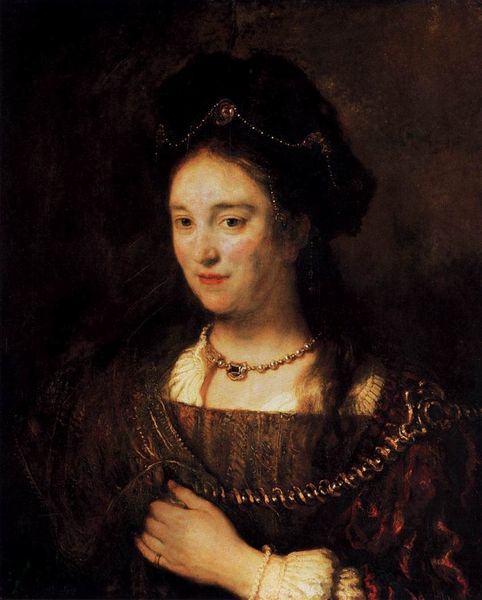
painting, oil-paint
#
portrait
#
figurative
#
baroque
#
painting
#
oil-paint
#
figuration
#
history-painting
Copyright: Public Domain: Artvee
Curator: Here we have a painting by Anthony van Dyck, titled "A Portrait of a Noblewoman". Editor: She strikes me as quietly resolute, almost melancholic. The dark background really pushes her pale skin and that incredible lace collar forward. Curator: Indeed. It's a masterful demonstration of Baroque portraiture, capturing the sitter's likeness while also projecting her social status. Think about the intense labor required to produce clothing of this quality. This lace was handmade, thread by painstaking thread. Editor: The collar itself is incredible. Look at the delicate craftsmanship, how it both constrains and frames her face. You almost feel the weight of it, not just literally but the weight of expectation, of her role. Curator: Exactly! Fashion became a marker of identity. The style of dress reflected power, wealth, and belonging within very defined societal structures. Her very presentation is a testament to that. And consider how the use of oil paints allow such textures and detail to come alive on canvas. It elevates it to the level of luxury that aligns to her social standing. Editor: It's also quite clever how Van Dyck uses light. See how it falls across her face and the lace, drawing our attention. Yet her dress practically vanishes into the background, really highlighting that distinction between what we see versus what she would have experienced herself. Curator: It’s fascinating to analyze the social and gender constraints implied within the visual language of Baroque portraiture. These women had limited agency. Their portraits were not simply aesthetic objects but instruments used to establish position within aristocratic circles. Editor: Precisely, and yet despite the apparent constraint, she still conveys this sense of strength and even challenge. It’s the contrast, perhaps, between her physical reality— the lace, the position — and her inner spirit. What can she even see or smell under the lace of such massive proportions? Curator: So, in viewing Van Dyck's painting, it becomes so much more than just another "portrait". It can be viewed as a visual manifestation of power, labour and even societal pressure that resonate through centuries. Editor: Yes, what a privilege to witness it through all those diverse lenses. It does so much to bring history to life.
Comments
No comments
Be the first to comment and join the conversation on the ultimate creative platform.
